-
Posts
2.332 -
Joined
-
Last visited
-
Days Won
60
Posts posted by Sundiata
-
-
18 hours ago, jesper said:hello I would be interested in when the alpha 24 will be released. if someone can help me. then please
There is no release date yet.
Development for alpha 24 is currently at 76%, and development is ongoing:
https://trac.wildfiregames.com/roadmap
Although it's impossible to derive a timeframe from that.
-
Wow, among all the other things, I was really exited to see new units exiting from buildings... Maybe this has been asked before, but what's preventing us from having it in vanilla? Would be awesome...
-
 4
4
-
-
9 hours ago, badosu said:
providing more realism and avoiding anachronistic or even impossible stuff in (e.g. mauryan bolt siege
Maurya's had ranged siege equipment, described as "moveable machines" and "immoveable machines", that made use of "string" to "shoot" [arrows? stones?] at the enemy forts or parapets to "destroy" them. Described in Kautilya's Arthashastra.
Even before the Maurya Empire, Ajatashatru, King of the Haryanka dynasty of Magadha, apparently used catapults against the Licchavis according to Jain literature.
It is probably historically inaccurate to depict them without ranged siege... We just don't have good visual refs for now.
-
2 hours ago, Genava55 said:
I agree. In fact this is a common issue with Polybius work, he came up very often with a logical explanation without really having any evidence for this. This is hard to distinguish what comes from witnesses or other literal accounts and what comes from his own reasoning and thoughts.
Yeah, but if at least 9 other ancient writers say the same thing, then it's strange to describe it as a figment of Polybius' mind. My personal opinion, it seems to me that Polybius' account is questioned because of the modern controversy, and not because the actual passage itself is questionable or problematic. African elephants are often depicted as being short of stature in art from Antiquity as well, so it's not just the ancient accounts, but also pictorial evidence that leads us to the conclusion that African (war) elephants were small. For myself, and I think Nescio as well, the main point of contention isn't whether they were small or not, but whether these elephants were (more closely related to small) bush elephants, or whether they were (more closely related to) forest elephants. Ironically, it would make little noticeable difference for the elephant models in-game. Most players wouldn't notice either way. We're really just nitpicking details here.
2 hours ago, Genava55 said:But indeed it seems the idea of the African elephants being smaller than the Indian ones was a common conception during classical times. I don't think there are evidences in classical literature for the ancients to know about different species of African elephants. Initially, in the beginning of the thread I thought there was one, the Adoulis inscription:
I thought Troglodytic would have been applied to a different kind of elephant but actually this is not necessarily the case after discussing about it with Nescio and reading the article he gave me.
Troglodytic, the adjective of Troglodytae, is a very generic term that simply refers to "cave dwellers", and simply refers to very primitive people as could be found in parts the Sahara or the Red Sea Coast. The term isn't even exclusively used for specific African peoples, see Strabo, who uses the term Troglodytae to refer to a tribe in Scythia Minor on the West Coast of the Black Sea... But the differentiation between Troglodytic and Ethiopian elephants in itself is indeed of notable interest. Basically differentiating between elephants from Sudan (Aethiopia) and those from Eritrea/Modern day Ethiopia. But why exactly? The coastal regions on the Red Sea from Sudan to Eritrea where the Ptolemies set up their bases weren't exactly far from each other...
By the way, are you referring to the L. Casson (1993) article? I read it a short while back. It says that both species of elephants were found more or less throughout the continent including the lands of the Red Sea and Gulf of Aden during Antiquity (after Scullard), and that Philadephus' hunting parties almost certainly went after forest elephants (also referring to the consistency of ancient writers in describing the African elephants as smaller than the Indian ones, as an argument).
2 hours ago, Genava55 said:So maybe the ancients didn't really know about the bush elephants we all know today.
Besides the people involved in the selection and hunt of these animals, I think that indeed most ancients in the Mediterranean would have been largely ignorant of the large bush elephants. Also, bush elephants are really difficult to handle... They're really stubborn and also have a penchant for killing their handlers... They can be ridden, but they're not really war-elephant material.
Also, a pissed off bush elephant is just a really scary sight... I pissed one off one time in northern Ghana in a large nature reserve. I had wondered off by myself, and was standing by a creek when an elephant walked through the creek at barely 10 meters from me, and it hadn't noticed me because of the shrubs until it was standing almost directly in front of me.. He got startled and gave me a little heart attack too, but it just "growled" and went on with its day. A very short while later, another large elephant started mock charging me from across the creek... Another small heart attack ensued, but the big boy was just acting tough and didn't follow up on the charge. Of course, I did the only sensible thing a man can do in such a situation: take pictures
 :
2 hours ago, Genava55 said:
:
2 hours ago, Genava55 said:The difficulty is first the inconsistencies in elephant representation and the lack of elephant remains in ancient context. Furthermore, the few remains found are generally not analyzed with DNA techniques, exclusively from an osteological perspective. Which is known to be ineffective in the differentiating African elephant species, excepted if the whole skeleton is found (but it is never the case).
An example with this article in which the authors are clearly unable to identify the subspecies/species from the bones (or the tusks in this case), only from reasoning:
https://www.sciencedirect.com/science/article/pii/S2352409X16302693
True. Though, sadly, I don't have access to the article (is it worth making an account there?)
-
 1
1
-
-
1 hour ago, Genava55 said:
Anyway, amateurs won't solve easily problems experts cannot.
I agree. It's a super contentious subject since the 20th century. It's definitely not a new debate...
1 hour ago, Genava55 said:Several hypotheses can be drawn but none can be really ruled out neither proven correct:
- Polybius made up account or mistake. This is possible since it is not the first time there is made-up explanations in Polybius' work. So common bush elephants are still a credible hypothesis.
I want to just point something out here that's quite important. The dismissal of the idea that African war elephants were smaller than Indian war elephants does not only require us to ignore Polybius' account, but actually requires us to ignore many other Greco-Roman accounts as well.
I recently read: Again on the Elephants of Raphia: Re-examining Polybius' Factual Accuracy and Historical Method in the light of a DNA Survey, which agrees with the notion that the modern Eritrean elephants of Gash Barka are the same species as the ancient African war elephants, and basically says that Polybius mention of African elephants being smaller than Indian ones was a non-factual statement: https://research.ncl.ac.uk/histos/documents/2016AA08SchneiderAgainontheElephantsofRaphia.pdf
What I actually found much more interesting than the article itself was the appendix, which includes many other ancient accounts which actually mention that Indian elephants were in fact larger than Libyan (African) elephants. It's not just Polybius. It was "common knowledge" in Antiquity that Indian elephants were the largest. Polybius' claim was readily repeated as well as complimented by other accounts, some pre-dating him:
[1] Onesicritus, FGrHist 134 F 14 (and other authors) = Strabo 15.1.43.
And both he and others state that they are larger and stronger than the Libyan elephants [μείζους δὲ τῶν Λιβυκῶν καὶ ἐρρωμενεστέρους ἐκεῖνός τε εἴρηκε καὶ ἄλλοι]. (Translation by H. L. Jones.)44
See also Strabo 15.1.22 (Onesicritus, FGrHist 134 F 22).[2] Megasthenes, Indika, FGrHist 115 F 4 = Diod. 2.35.4.
It also breeds elephants both in the greatest numbers and of the largest size, providing them with sustenance in abundance, and it is because of this food that the elephants of this land are much more powerful than those produced in Libya [καὶ πλείστους δὲ καὶ μεγίστους ἐλέφαντας ἐκτρέφει, χορηγοῦσα τὰς τροφὰς ἀφθόνους, δί ἃς ταῖς ῥώμαις τὰ θηρία ταῦτα πολὺ προέχει τῶν κατὰ τὴν Λιβύην γεννωμένων]. (Translation by C. H. Oldfather.)
Also see Diod. 2.42.1 = Megasthenes, fragment Schwanbeck 4 (‘The coun- try of the Indians also possesses a vast number of enormous elephants, which far surpass all others both in strength and size [ἔχει δ́ ἡ τῶν Ἰνδῶν χώρα πλείστους καὶ μεγίστους ἐλέφαντας, ἀλκῇ τε καὶ μεγέθει πολὺ διαφέροντας]’).
[5] Diod. 2.16.3–4.
For India is a land of unusual beauty, and since it is traversed by many rivers it is supplied with water over its whole area and yields two harvests each year; consequently it has such an abundance of the necessities of life that at all times it favours its inhabitants with a bounteous enjoyment of them ... It also has an unbelievable number of elephants, which both in courage and in strength of body far surpass those of Libya [ἔχει δὲ καὶ τῶν ἐλεφάντων ἄπιστον πλῆθος, οἳ ταῖς τε ἀλκαῖς καὶ ταῖς τοῦ σώματος ῥώμαις πολὺ προέχουσι τῶν ἐν τῇ Λιβύῃ γινομένων] ... (Translation by C. H. Oldfather.)
[6] Livy 37.39.13 (the Roman battle line at Magnesia in 190 BC).46
They placed, sixteen elephants in reserve behind the triarii, for, in addition to the fact that they seemed unable to face the greater number of the king’s ele- phants—there were fifty-four of them—African elephants cannot resist even an equal number of Indian, whether because the latter are superior in size— for in fact they are far larger—or in fighting spirit [nam praeterquam quod multitu- dinem regiorum elephantorum—erant autem quattuor et quinquaginta—sustinere non vide- bantur posse, ne pari quidem numero Indicis Africi resistunt, sive quia magnitudine—longe enim illi praestant—sive robore animorum vin@#$%ur]. (Translated by E. T. Sage.)
[7] Plin. Nat. 8.27.
African elephants are afraid of an Indian elephant, and do not dare to look at it, as Indian elephants are indeed of a larger size [Indicum Africi pauent nec contueri audent, nam et maior Indicis magnitudo est]. (Translated by H. Rackham.)
[8] Plin. Nat. 8.32.
Elephants are produced by Africa beyond the deserts of Syrtis and by Maureta- nia; also by the land of Ethiopia and the Trogodytes, as has been said; but the biggest ones by India [Elephantos fert Africa ultra Syrticas solitudines et in Mauretania, ferunt Aethiopes et Trogodytae, ut dictum est, sed maximos India] ... (Translated by H. Rackham, slightly modified.)
[9] Curtius 8.9.17.
The strength of its [i.e. India] elephants is greater than those which men tame in Africa [Elephantorum maior est vis quam quos in Africa domitant, et viribus magnitudo respondet]. (Translated by J. C. Rolfe.)
[10] App. BC 11.160 (the battle line at Magnesia).
He gave the command of the left wing to Eumenes. Considering his African elephants of no use, being few in number and of small size, as those of Africa usually are (and the small ones are afraid of the larger [sc. Indian elephants]), he placed them all in the rear [τῶν δ ̓ ἐλεφάντων, οὓς εἶχεν ἐκ Λιβύης, οὐδένα νομίζων ἔσεσθαι χρήσιμον ὀλιγωτέρων τε ὄντων καὶ βραχυτέρων οἷα Λιβύων(δεδίασι δ ̓ οἱ σμικρότεροι τοὺς μείζονας), ἔστησεν ὀπίσω πάντας]. (Translated by H. White.)
11] Philostr. VA 2.12.
The Indian elephants exceed those from Libya in size to the same extent as those exceed a Nisaean horse [ὅσον δὲ ἵππου Νισαίου μείζων ὁ Λιβυκὸς ἐλέφας,τοσοῦτον τῶν ἐκ Λιβύης οἱ Ἰνδοὶ μείζους]. (Translated by C. P. Jones.)
[12] Servius Ad Georg. 1.57.
India gives ebony. There are also elephants in Africa, but they are better in India. Hence Terence: ‘the man who was in charge of Indian elephants’, that is to say the biggest ones [‘India mittit ebur’ et in Africa fuerunt elephanti, sed meliores in India. hinc est quod ait Terentius ‘elephantis quem Indicis praefecerat’, id est maximis].
The article basically argues that all these authors either based their writing on each other, or were just repeating a commonly held, but mistaken belief during Antiquity that Indian elephants were the largest, and so, all these authors were actually mistaken and basically did not know what they were talking about. I disagree with this. I think it's pretty darning that there are so many ancient accounts in agreement on the idea that African (war) elephants were actually smaller. Even more darning is that I've never seen an account state the opposite, that African elephants were larger, even though someone must have noticed over the centuries, if they were indeed using large bush elephants that they actually tower above Indian elephants.
I don't think that the use of larger African Bush elephants is credible in light of these accounts. The other 4 possibilities you (Genava55) mentioned are still a possibility of course. It's very much still an open question. But I think we can be relatively certain that these elephants were 1) African, and 2) small.
-
 1
1
-
11 hours ago, Sundiata said:
You just casually invented an entirely new subspecies or class of African bush elephant that is smaller than Indian elephants, while no one has ever proven their existence. I don't think I've even really seen it seriously suggested before.
Ok, admittedly, this sentence isn't entirely correct on my part. The theorized North African Elephant (Loxodonta africana pharaohensis) is sometimes said to be a subspecies of bush elephant, while others refer to it as the North African forest elephant, while others consider it an entirely separate subspecies... It's taxonomy is entirely uncertain:
"The North African elephant (Loxodonta africana pharaohensis) was a subspecies of the African bush elephant (Loxodonta africana), or possibly a separate elephant species, that existed in North Africa, north of the Sahara, until becoming extinct in Roman times. These were the famous war elephantsused by Carthage in the Punic Wars, their conflict with the Roman Republic. Although the subspecies has been formally described,[1][2] it has not been widely recognized by taxonomists. Other names for this animal include the North African forest elephant, Carthaginian elephant, and Atlas elephant. Originally, its natural range probably extended across North Africa and down to the present Sudanese and Eritrean coasts."
https://en.wikipedia.org/wiki/North_African_elephant
For now, it's all based on hypotheticals, whichever direction you choose to argue.
-
Aaaah, I still love that movie


-
 1
1
-
-
Just now, m7600 said:
-Dr Indiana Jones
Wait... Didn't that guy try to steal our logo that one time back in 1936?
Though I don't really blame him... It's a pretty cool logo...
Just now, m7600 said:"If it looks legit, then it is." -Dr Indiana Jones, circa 1997.
Can't argue with that!
I didn't know he was a leading expert on war elephants as well. What a polymath!
-
 2
2
-
-
16 minutes ago, m7600 said:
No no, you guys have it all wrong. Allow me to put an end to this discussion by providing the real reference for those elephants. This is what they looked like:
Oh my god, I think you might be on to something... I found this totally legit relief from Nowhereland:
Spoiler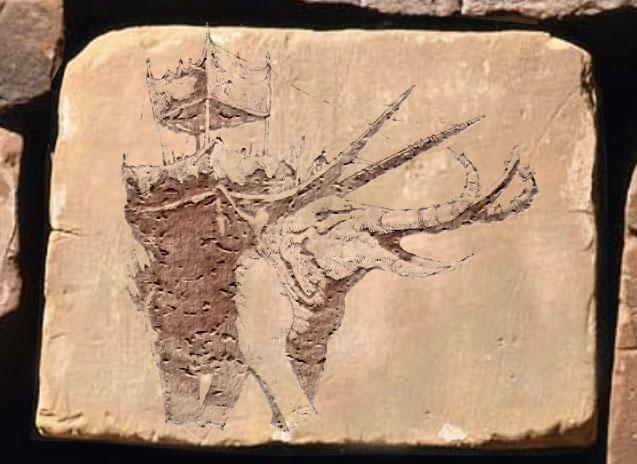
-
 1
1
-
-
@Nescio You seem to have completely missed the point of my post:
On 7/31/2020 at 6:24 PM, Sundiata said:to understand the argument that the historical maximum range of forest elephants was significantly more northerly than it is today, we must first properly understand the current range of forest elephants, which we don't.
Then you say:
3 hours ago, Nescio said:forest elephants live in the equatorial rainforests of West and Central Africa
I shared the article because it shows that forest elephants today still live north of the equatorial rainforests of West and Central Africa. The elephants from southern South Sudan in the article live at least 100 km north of the nearest equatorial rainforests in an area that's a patchwork of forests and grasslands. Use the satellite view of google earth and you'll clearly see that the equatorial rainforests are a distinct biotope from the forests, scrublands and grasslands of southern South Sudan. Even from space, they're very clearly different shades of green. And that's my point. Even their current range is larger than what experts used to think only a few years ago. As I have clearly pointed out, it's impossible to know how far north these or other related populations reached only a few hundred years ago, because we barely know how far they reach today. Let alone how far they reached 2500 years to 2000 years ago. The climate was different, and all those maps you shared do not accurately represent the African climate more than 2000 years ago. We know this! The Sahara has advanced as much as 200 km in the last century alone! Even Nero's expedition up the Nile in the 1st century remarked on the abandoned towns of northern Nubia and described it as a region rendered into a desert... For the period that's relevant to 0 A.D., from 500 BC to 1 BC, Sudan, especially the Butana, and especially the southern Butana were decidedly more green and forested than they are today. Taking this into account, it becomes impossible to offhand discount the use of forest elephants as opposed to Bush elephants. Neither species of elephant exist in Sudan today. And in South Sudan, where significant elephant populations still exist, the range of forest elephants and bush elephants overlap and they hybridize. More than 2000 years ago, these same habitats would have been found several hundred kilometers to the north as well.
QuoteThe ‘greener grass and a bit of forest’ is in contrast to the desert between the 1st and 6th cataracts, described only slightly earlier (6.181, 6.182).
*1st and 5th cataract. Meroë lies between the 5th and the 6th cataract. He's describing the savannah of the northern Butana...
3 hours ago, Nescio said:Here is a recent study of the (now isolated) elephant population of Eritrea:
A. L. Brandt et al. (2013) “The Elephants of Gash-Barka, Eritrea: Nuclear and Mitochondrial Genetic Patterns” https://doi.org/10.1093/jhered/est078
which shows that Eritrean elephants are genetically bush elephants and clearly not forest elephants. Moreover, the area the live in is actually adjacent to the Butana (i.e. the “Island of Meroë”) in neighbouring Ethiopia and Sudan, and matches Pliny's description (arid, but with grass, trees, and elephants).
Yes, and? Those Eritrean elephants are huge. They tower over Indian elephants, so they don't match the descriptions nor the depictions of small African elephants. You can't have your cake and eat it too. What are you arguing for exactly? That the huge Eritrean elephants from that study are related to the ones used in warfare during Antiquity? Which would render the ancient accounts and depictions all wrong... Or are you arguing that Eritrean elephants were smaller than Indian elephants during Antiquity but have since somehow evolved into the large bush elephants from that study? Neither of those theories make any sense.
3 hours ago, Nescio said:This sentence is rather misleading. I'm assuming good faith, i.e. that's not deliberate. Please have another, more careful look at an appropiate map.
I never argue in bad faith, Nescio. You don't need to tell me that you assume "good faith", because it comes over as if you really mean the opposite.
There's 100 km between the Southern Butana and the borders of South Sudan. I'm pointing out that the distance between the southern part of the Island of Meroë and South Sudan is not far. If we assume that forest elephants roamed several hundred kilometers further north from where they do today, which we can, then that means there may very well have been forest elephants within reach of Kush. Notwithstanding the fact that the Butana itself is it's own unique biotope that was home to many animals that have all but disappeared from the region since Antiquity. As far as I can tell, there are no hippo's rhino's, giraffes, lions etc in that region today anymore either. Forest elephants are called as such because they are mostly found in jungles today. But this might as well represent a retreat from their historical ranges. They are far more vulnerable to poaching/hunting because they have the slowest reproductive rate of the three elephant species. Bush elephants reach sexual maturity at age 10 - 12. Forest elephant don't reach sexual maturity until the age of 23! That's a huge difference. And they have a longer gestation periods as well. They can't replace their losses the way bush elephants can, which means that they're the first to go extinct in any given area.
3 hours ago, Nescio said:As you know, the Butana is the area between the Blue Nile and Atbara (or Black Nile); its lower, northern part is in Sudan, the upper, southern in Ethiopia. Adjacent to it is the Gezira, the area between the Blue Nile and White Nile. On the other side of the White Nile is Kordofan. To the south is the Sudd, a large swamp along the White Nile, which was known to and reached by Egyptians, Romans, and Arabs, but considered impregnable (I guess this also formed a natural border for the Meroitic and later kingdoms); the Sudd is now in South Sudan. Beyond the Sudd is a transition zone, and only afterwards you reach the forrested Congo-South Sudan border, more than 1000 km away from the Butana.
And at its height, Kush ruled an area of almost 2000 km north to south, approximately 1000 km north to south during 0AD's timeframe, and traded with regions well over 3000 km away. More than 4000 km if you count India. But you're telling me that they couldn't get elephants from their own backyard (figure of speech)? Again, those forest elephant would have roamed several hundred kilometers further north during Antiquity. They weren't 1000 km away 2000 years ago. That's the whole point! We don't know how far north these elephants once reached.
What bugs me about your posts here is that you're peddling a fringe hypothesis that relies on even more speculation and conjecture than the hypotheses you're arguing against. This:
3 hours ago, Nescio said:By contrast, the idea that they used (small) bush elephants (L. africana) is a much more simpler explanation.
You just casually invented an animal to suite your argument.
You just casually invented an entirely new subspecies or class of African bush elephant that is smaller than Indian elephants, while no one has ever proven their existence. I don't think I've even really seen it seriously suggested before. In fact, the presence of large bush elephants in South Sudan and Eritrea argues against an overlapping presence of hypothesized small bush elephants and large bush elephants in the same areas, because one would obviously either outcompete or assimilate the other. The only reason that Bush elephants and forest elephants can overlap is because they can inhabit different niches in the same environment.
I'm not saying it's impossible that there were historical bush elephants populations that were smaller than Indian elephants, but without even a shred of evidence for the existence of such an animal, I'm very much on the fence about it.
For the time being, I'll stick to the "communis opinio", as you put it, or some variation of this more widely accepted hypothesis.
-
 2
2
-
-
On the question of forest elephants, the argument has been made here that the climate was different more than 2000 years ago, which is true. It's impossible to determine the historical range of the individual subspecies, but sometimes classical sources can give us some hints about the historical range of elephants in general. Relevant to the Kushites, Pliny, wrote in the 1st century
"They also state that the grass in the vicinity of Meroë becomes of a greener and fresher colour, and that there is some slight appearance of forests, as also traces of the rhinoceros and elephant." Pliny, CHAP. 35.—ETHIOPIA.
I'm still on the fence about which specific subspecies Kushites used, but in my opinion, assuming that these elephants in the vicinity of Meroë, or those much further south in Sudan, were just "small bush" elephants is as, or even slightly more hypothetical than assuming that they were forest elephants. None of the arguments in the thread so far, in either direction, have been thoroughly convincing. But to understand the argument that the historical maximum range of forest elephants was significantly more northerly than it is today, we must first properly understand the current range of forest elephants, which we don't.
In another thread I pointed out that there are forest elephant and hybrid populations on the border between South Sudan and DR Congo, and today, I can again confirm more confidently the presence of forest elephants in South Sudan, "Western Equatoria state, which borders the Central African Republic and the Democratic Republic of the Congo", in a region of large open grasslands and thick forests. The southern Butana (southern part of the "Island of Meroë", approaching the borders of South Sudan) may have still been home to a comparable biotope 2000 - 3000 years ago...
Forest elephants confirmed in South Sudan:
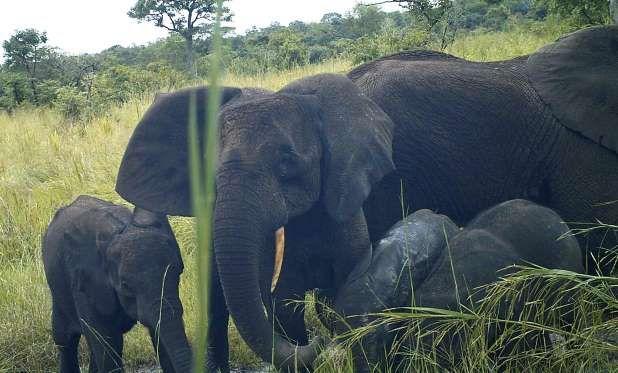
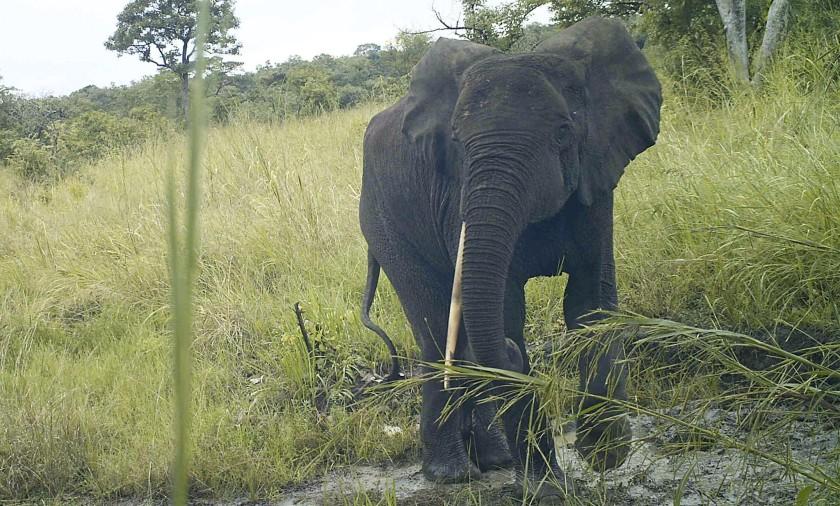
Just to clarify, I'm not making an absolute statement here. The use of "Small Bush elephants" is entirely possible, but has anybody ever confirmed the presence of these hypothesized Bush elephants in Sudan or environs that are noticeably smaller than Indian elephants, as per the ancient descriptions? On the other hand, I think that one of the strongest arguments against forest elephants is their distinctively narrow, and downward angled tusks. But as I've already pointed out earlier, there are actually forest elephants with tusks looking more similar to the tusks of bush elephants and then there's also the question of hybridization between the two species, which has also been confirmed through DNA studies.
-
I've read some of those, but by no means all. Will take a little while. Some of the ones I read did have problems though. I should read again.
On the question of turreted African elephants, one piece hasn't been discussed yet, if I'm not mistaken:
"Relief from the base of a Roman statue depicting an elephant. 2nd-3rd century AD. Vatican Museum."
-
-
 1
1
-
 1
1
-
-
Just now, m7600 said:
My only concern is that @VictorRossi and @Sundiata might want to kill us for intervening their portraits XD
Don't worry, I butcher other people's artworks as a hobby

Personally I'm not in favor of replacing any existing hand painted hero artwork in the vanilla game though.
-
That looks incredible...
-
@m7600, great work! Keep it up!
3 hours ago, m7600 said:I should have probably told you about this, but I've been working on a painting of Arakamani for his hero portrait.
Victor Rossi, made a stunning portrait of Amanirenas a while back:
Rossi's work inspired me to paint a portrait of Nastasen. (@Stan`, I adjusted levels and contrast a little, and tightened the crop. Don't know if it's worth replacing?):
The Amanirenas portrait has a southern Sudanese look, while Nastasen has a more central Sudanese look. So I wanted to give Arakamani a more Northern Sudanese/modern Nubian look, reflecting the diversity of Kush. I started way back in February. In hindsight, I wasn't satisfied with Nastasen's uraeus, so I spent a lot more time on Arakamani's uraeus, which in turn meant I had to spend a lot more time on all the other details as well, and 2 weeks (!) into painting the portrait, I was 85% into something that was way over my head and I had a miniature mental breakdown... lol... I have a strange relationship with my own art... But I'll finish it before Alpha 24... WIP:
Arakamani is said to have been educated in Greek philosophy, and his rule coincides with the move of the royal seat from Napata to Meroë, and the introduction of Hellenistic influences in Kush, which is why I gave him a sort of Hellenistic looking golden laurel wreath crown, to emphasize that. Laurels are actually depicted in combination with some Meroitic crowns, but they honestly look different. Oh well...
The full portrait was supposed to depict Arakamani's massacre of the priest of Amun at Napata, after they ordered his suicide (my kind of guy):
-
 2
2
-
 1
1
-
-
-
-
This was also an interesting thread to check out:
-
 3
3
-
-
Just now, wowgetoffyourcellphone said:
What about trying to import the helmet model from the game? They are now quite highly detailed and accurate. Since these are close ups we should have them wearing realistic gear (specially helmets).
I was thinking the exact same thing! @Alexandermb really did a stellar job on those!
-
 1
1
-
-
@LordGood, I don't believe this has been shared before:
Temple of Isis, Alexandria (not sure what it's based on though)...
Not sure if you can use it as inspiration for something?
-
 2
2
-
-
-
-
Or being able to choose your preferred default (capture/destroy).
-
 1
1
-

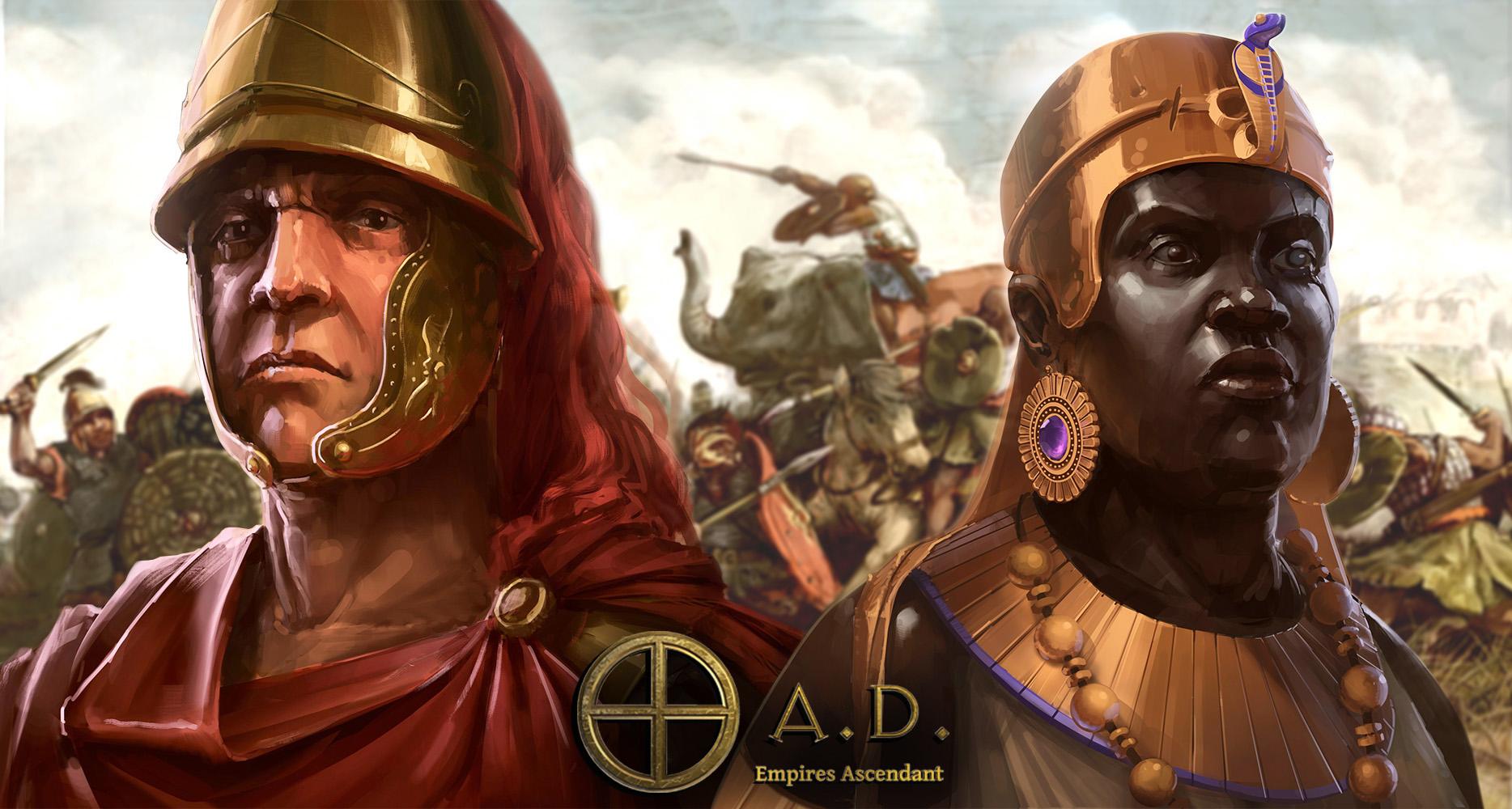

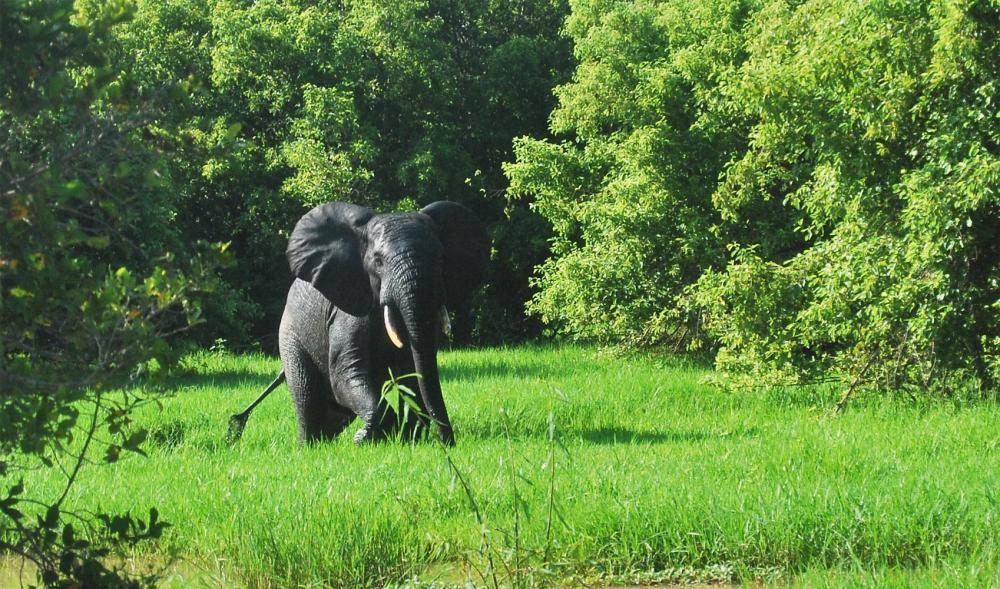

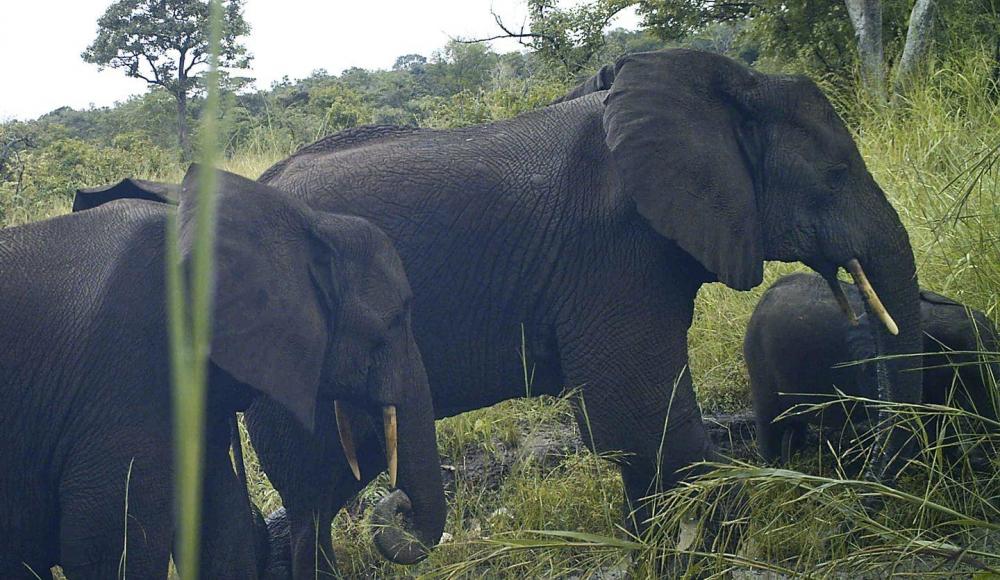
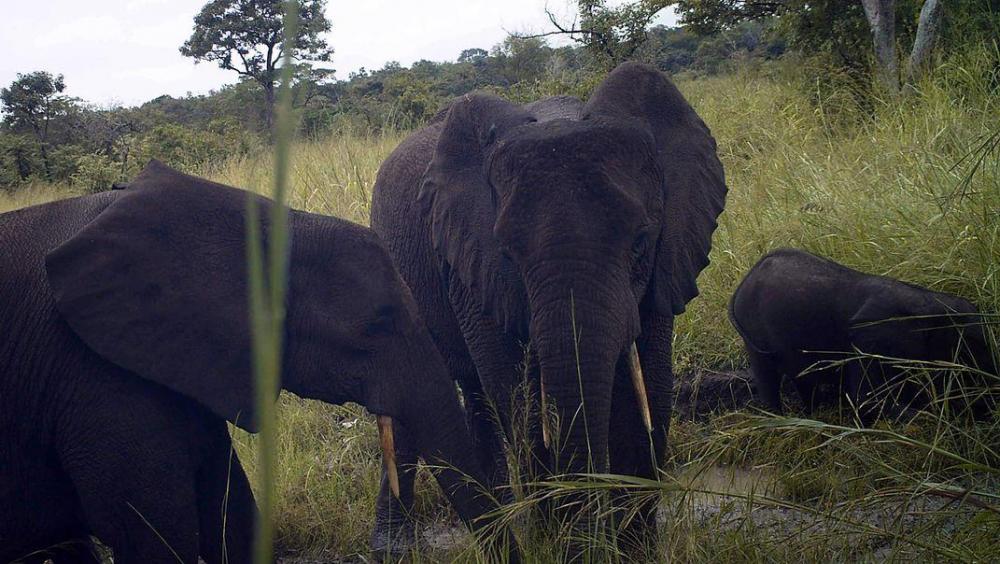
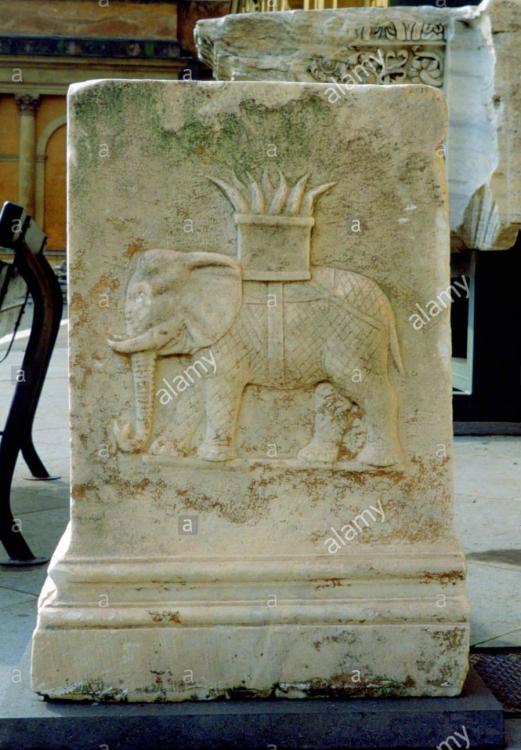
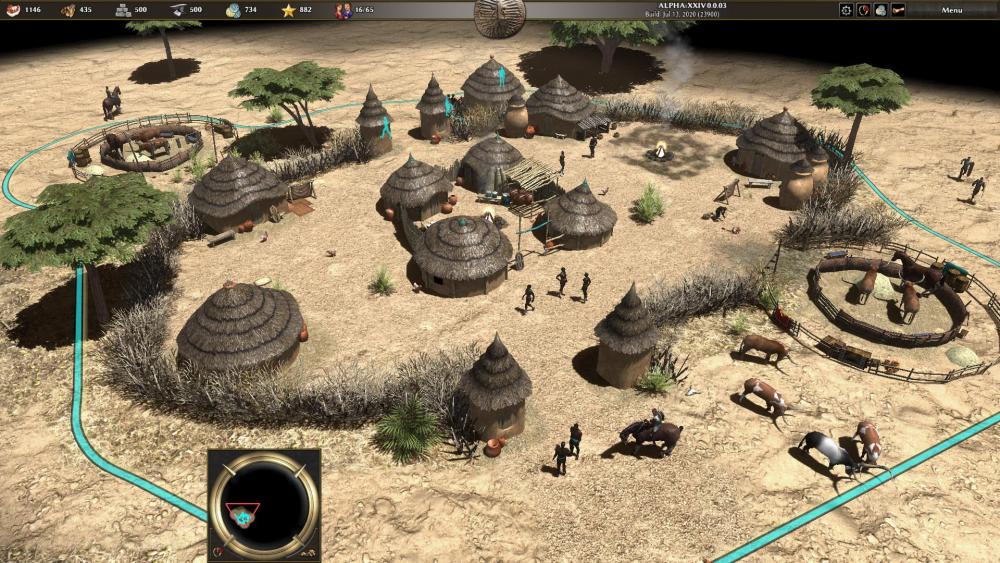


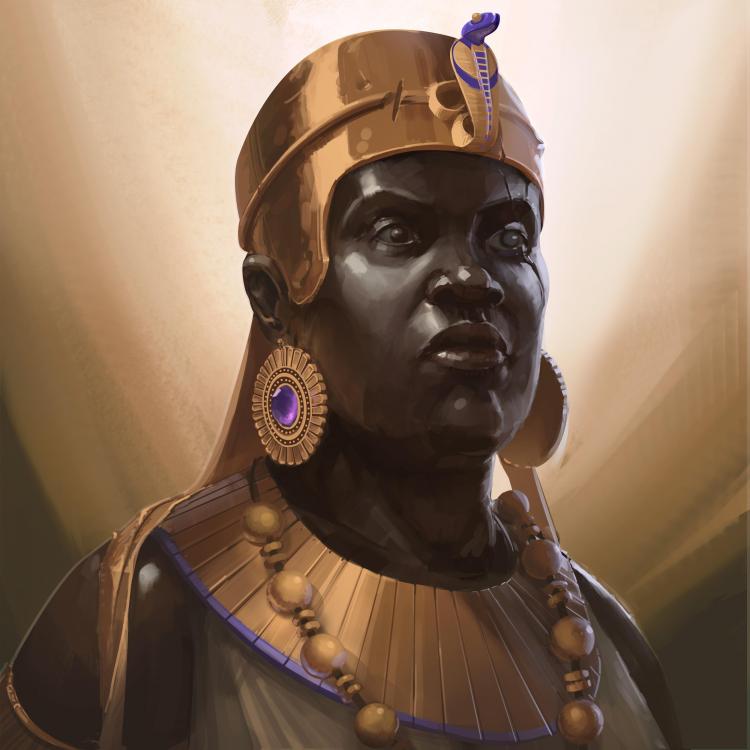
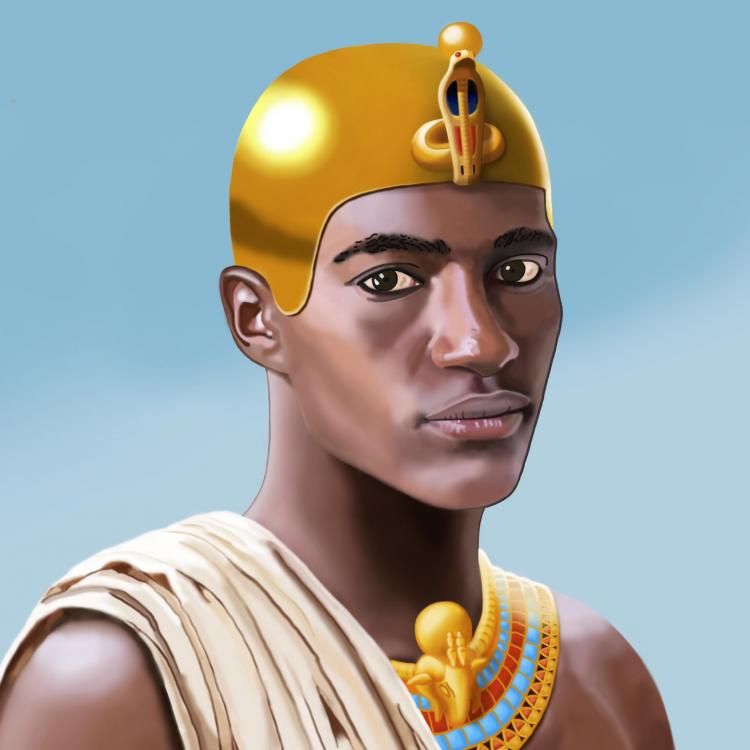
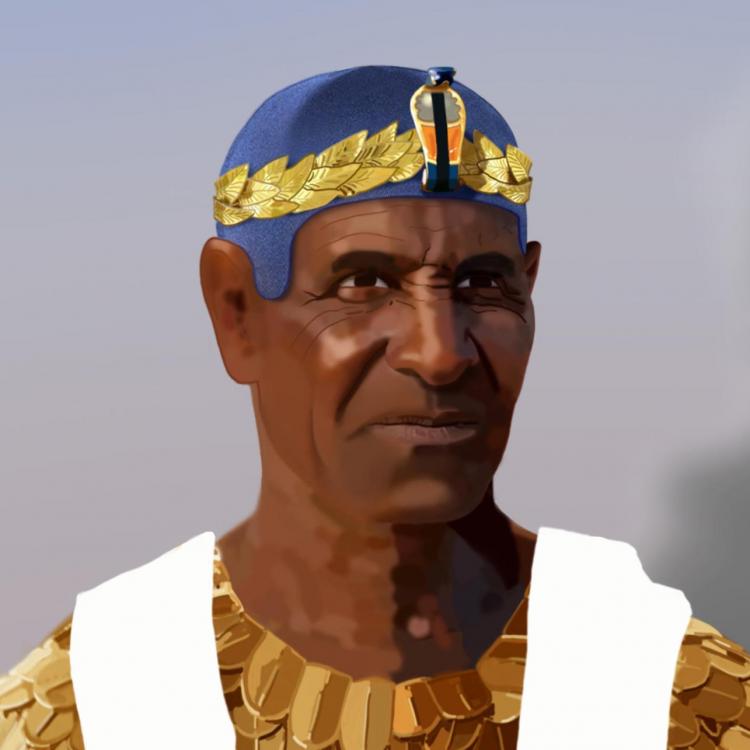
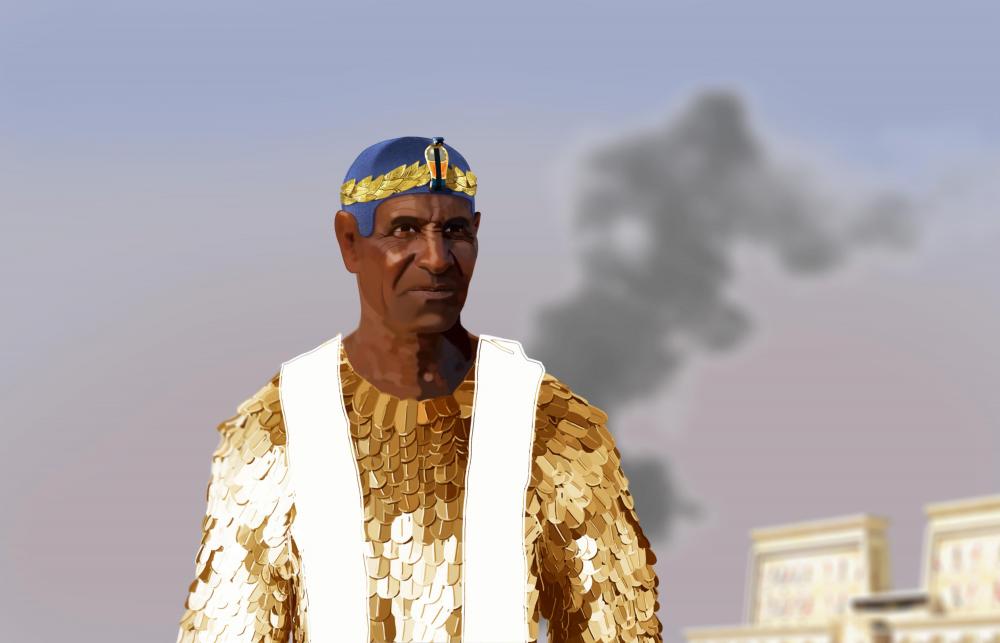

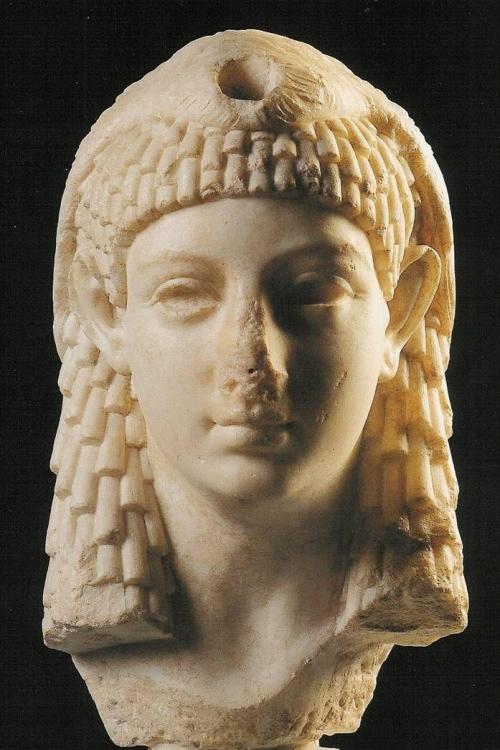
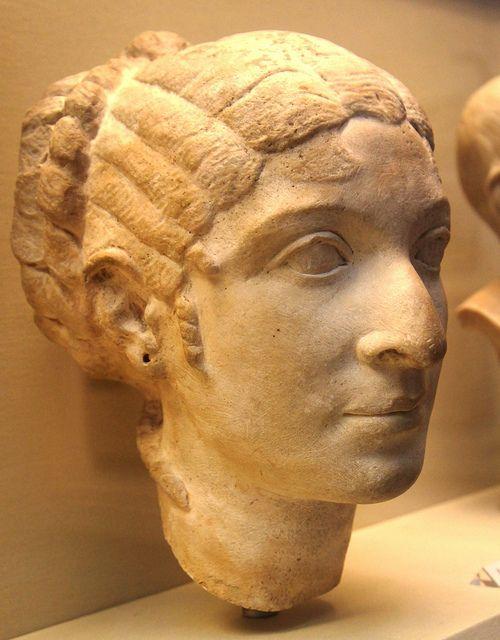
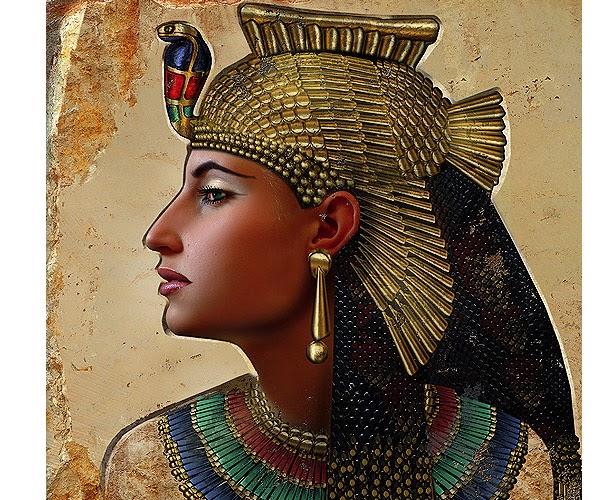
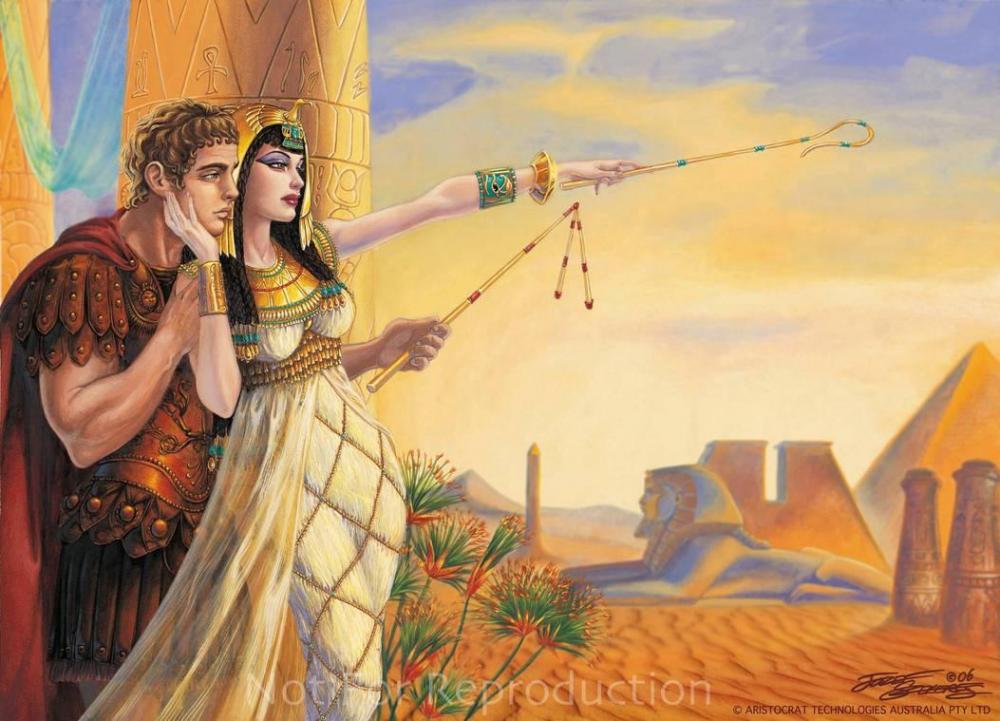
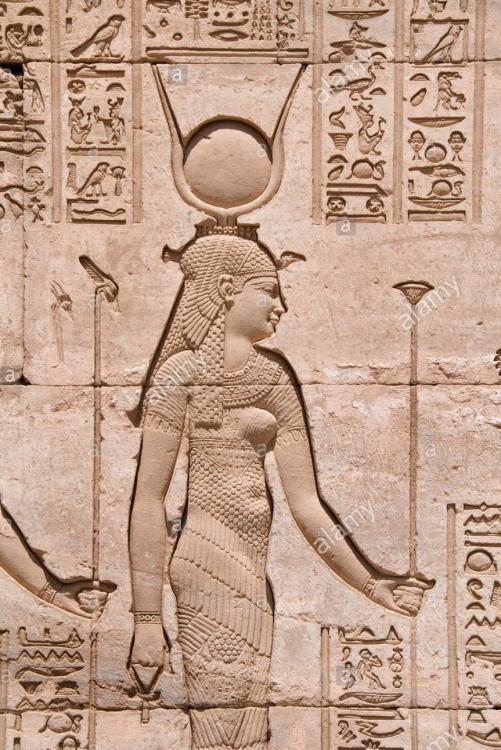
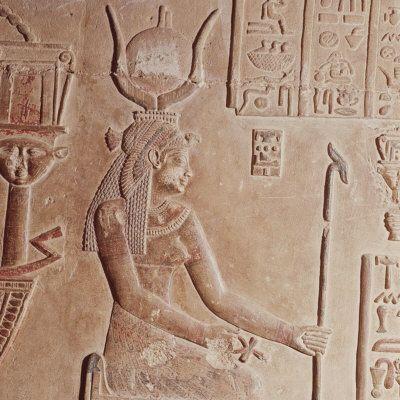
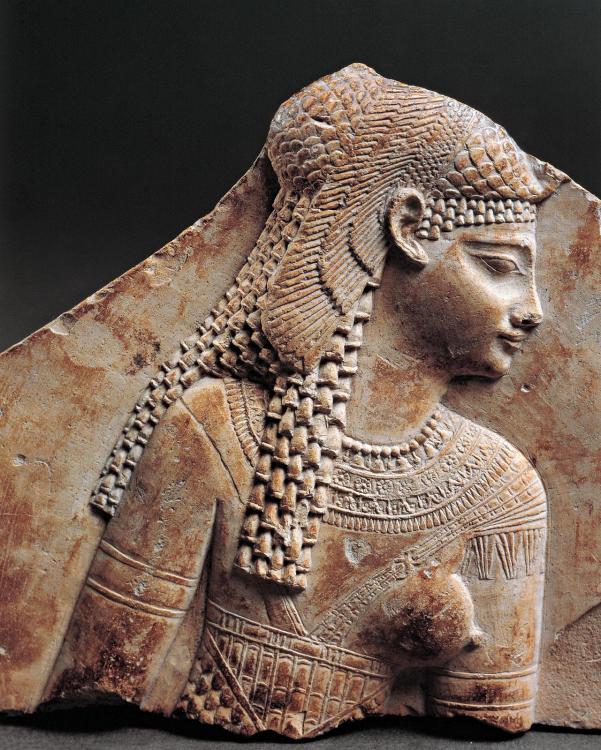
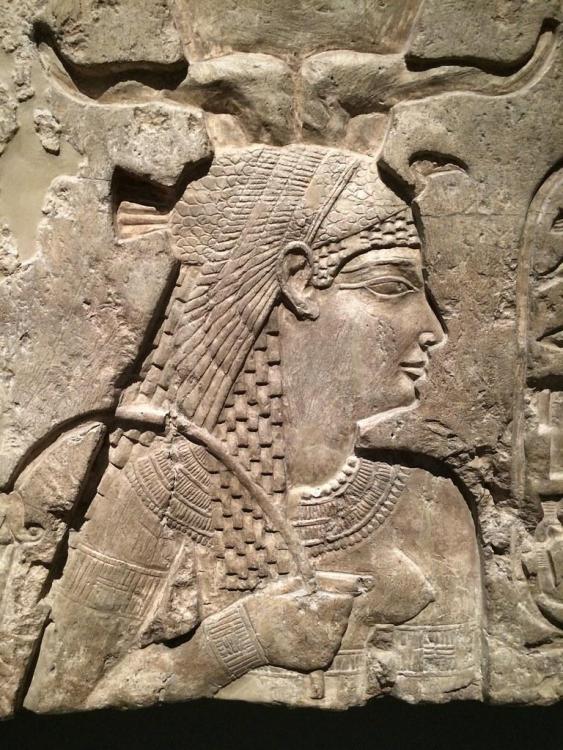
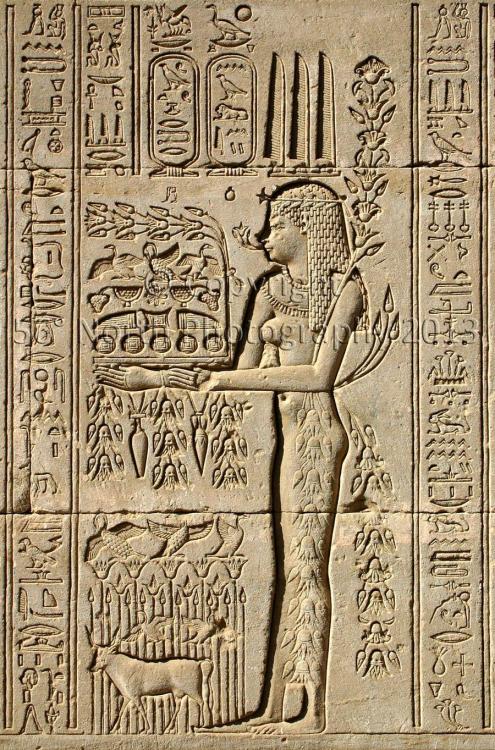
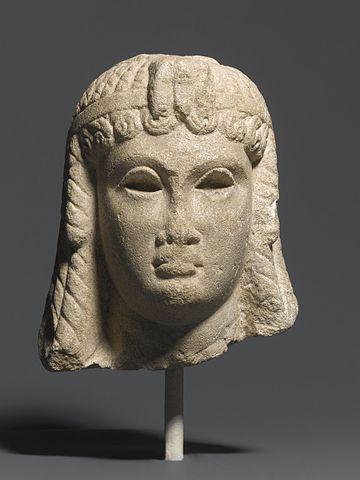

Feature: Hero Upgrades
in Delenda Est
Posted
Abraha is not a Kushite but an Aksumite, and the Kushites are not predecessors of the Aksumites either. They're distinct peoples with distinct cultures, languages, religions, ethnogeneses, architecture, and history in general. They actually went to war with each other a few times and there was probably trade. Cultural exchanges did probably occur, but they're relatively superficial. Not that there's no relation at all, but nothing tangibly relevant to game-development. I'd strongly suggest to keep any Aksumite references for a possible future Aksumite faction, either in the main game if the timeline is ever expanded to c. 500 AD, or in a mod like a future version of Millennium AD. (Kingdom of Axum: c. 80 BC - 940 AD)